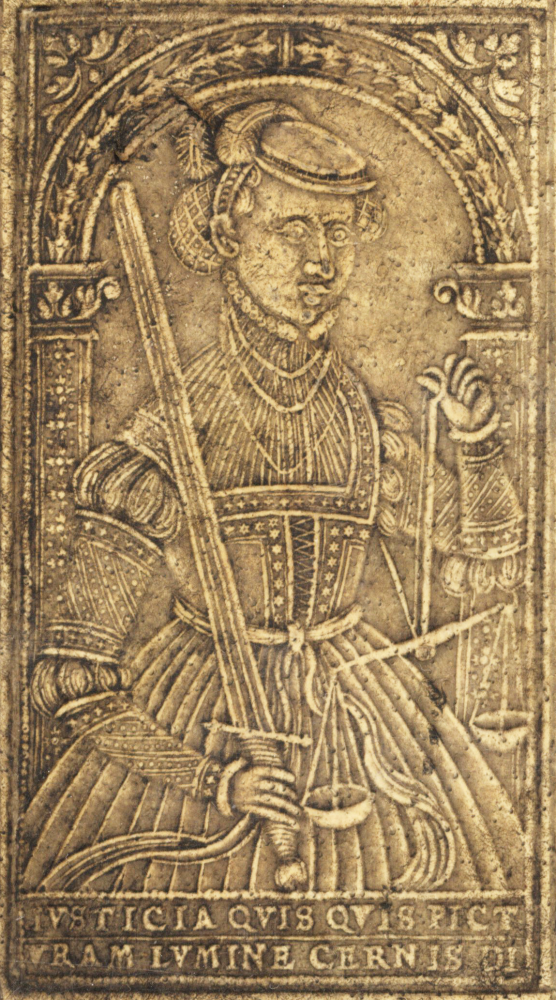- About
- Visiting
- What’s On
- Venue hire
- Catalogues
- Collections
- 101 Treasures of Chetham’s
- Digital Resources
- The Flowers of Histories
- A Book of Hours from France
- The Manchester Scrapbook
- Thomas Barritt of Manchester
- Art Treasures Examiner of 1857
- Manchester Association for Constitutional Order
- The North Western Museum of Science and Industry: Some Reminiscences by Richard Hills
- Criminal Manchester
- The Cup of Destiny
- Athenaeum Souvenir
- Middle English Manuscripts
- Manchester and Liverpool of Today
- Hollingworth’s Mancuniensis
- Memoir of Cecil Wray
- William Seward’s Diary
- The Anti-Monopolist
- Fishwick’s History of Rochdale
- Knyvett’s Defence of this Realm
- Tractatus de Nigromantia
- Axon Ballads
- Printed Books & Ephemera
- Archives & Manuscripts
- Prints and Photographs
- Blog
- Support us
Caring for our Books
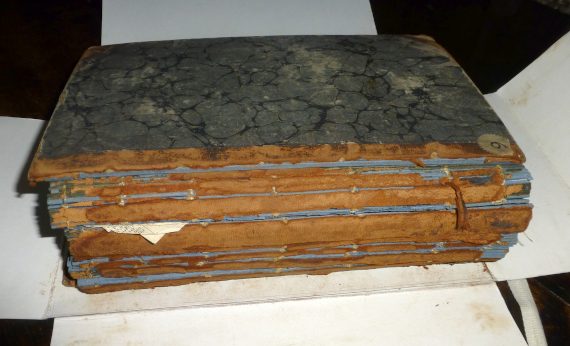

Getting from the wreck at the top to the conserved bindings here takes a bit of doing! This work was done by Formbys Ltd with the generous help of the National Manuscripts Conservation Trust.
Conservation practices at Chetham’s Library
It is no secret that Chetham’s library has a significantly important scholarly collection. There are over 120,000 printed items, over half of these were published before 1850. These include particularly rich collections of sixteenth and seventeenth-century printed works, periodicals, journals broadsides and other ephemera. This is in addition to over forty medieval manuscripts, including the thirteenth-century Flores Historiarum of Matthew Paris. What perhaps is less well know is how such objects are cared for.
Today we are going to delve into the world of book conservation. These are expensive and time precious, but essential practices. Generous visitor donations, tours and merchandise sales all contribute to the preservation of our historic collection. Book Conservation is a wide field that can be broken down into two areas, preventative and interventive conservation. Both are carried out for the library by specially trained members of staff and accredited conservators.
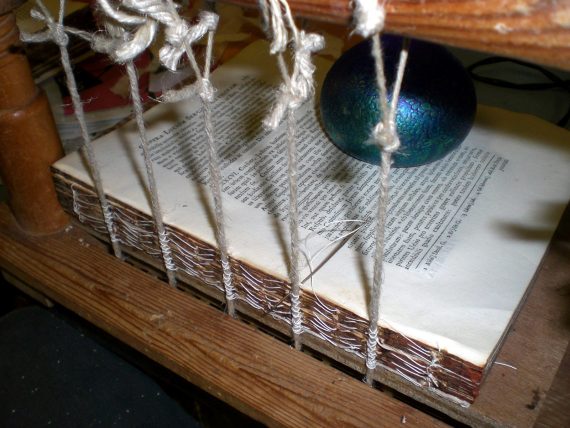
Essential conservation work being carried out In studio by Cyril Formby to restore one of our books to usable condition.
Library staff carry out preventative conservation daily. This as the name suggests, tries to prevent damage to our books and manuscripts before it begins. Areas include environmental control, integrated pest management, best handling practice and disaster salvage planning. As conservation is such a specialised field the Library has several policies in place, regulated by Arts Council England as a part of the Museum Accreditation Scheme to ensure best practice and only the most up to date methods are used in house.
Interventive conservation on the other hand is a much more hands on approach which crosses over into the field of restoration. Restoration is the practice of restoring an object to almost new condition. This is a fine line that many heritage organisations must walk as too much repair can wipe out historic use, which can sometimes be the most important part of an object. Or methods can be used that are not known to be scientifically stable and can look amazing for a few years, only to break down and destroy the material in the future. Interventive conservation is used to repair the books to a usable state, this is necessary as Chetham’s is a working collection with user accessibility at its core. It should also be noted, that work is carried out by professionals in a way that is reversable if needed in the future.
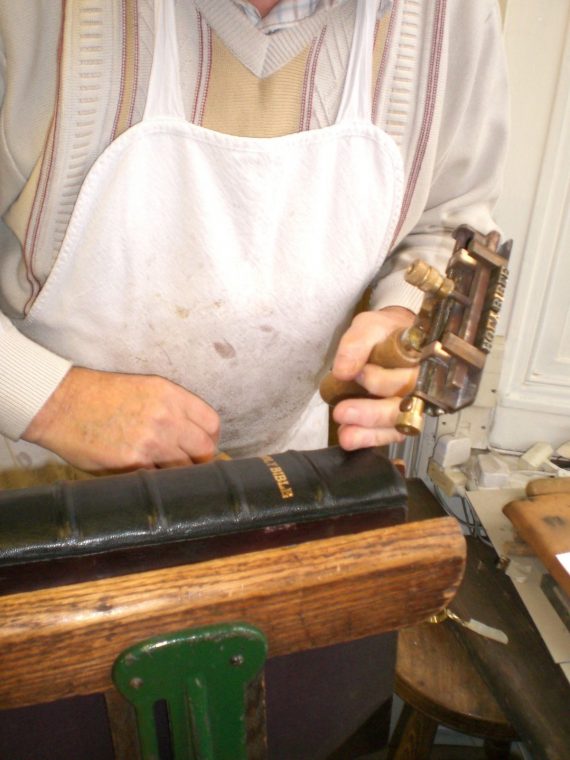
Here is one of our lucky books receiving treatment known as gold tooling. This is a practice where the title, author and volume number is impressed with gold leaf. It became very popular as books became a symbol of wealth throughout history, but is often the first thing to wear away over time.
Interventive Conservation is a costly service which can vary from £200 to over £1000 per book depending on size and treatment required. As Chetham’s is an independent charity we rely heavily on visitor numbers and donations to undertake this. Essential treatment can include anything from paper repair to complete rebinding. Due to cost only the most important and popular items can be given treatment. A way round this can be the production of facsimiles (a copy of the original), a slightly cheaper but still costly undertaking. Over the years many of our treasures have been sent out for interventive studio work to specialist accredited conservator Cyril Formby of Formbys Ltd.
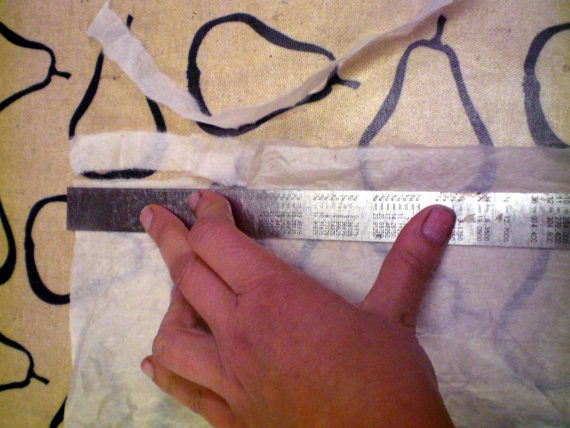
Here is Cyril preparing Japanese tissue paper for one of our paper repairs. Japanese tissue paper is the gold standard in paper repairs due to its acid free organic properties and long fibres. The repair is also weaker than the original paper so can be undone if mistakes are made.
There are many interesting and historically valuable bindings in the Library’s collections; you can read more about them in two blog posts by Nathan Shipstone, who was a placement student at the Library in 2016, one on vellum bindings and one on leather:
